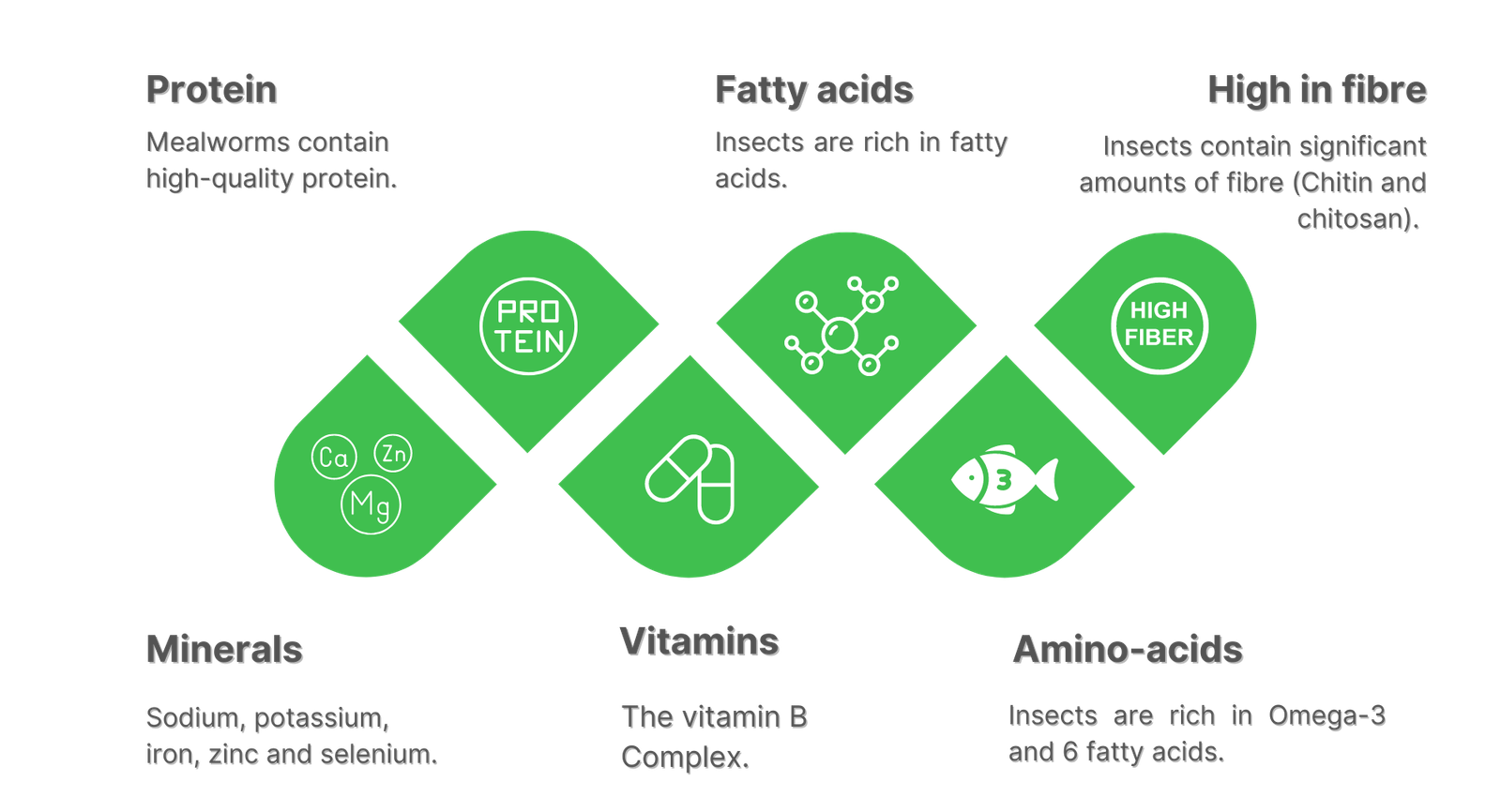By the year 2050
planet's population
The Food and Agriculture Organization of the United Nations states that by November 15th of this year the planet’s population will reach 8 billion, while by the year 2050 it will be 9 billion. Furthermore, humanity’s food consumption might increase by a staggering 70 percent. Which is why, it is highly likely that by 2030 the inhabitants of the planet might start to lack vital protein foods.

Why Consume Mealworms?
This new sort of food from insects is known as “innovative food” or “novel food” and the European Commission recently considered that it is safe to eat.
Mealworms contain high nutritional value (high protein and fibre content, vitamins and minerals including vitamin B12 , vitamin D, iron, magnesium and zinc, low saturated fat) and their cost- and resource-efficient breeding, which is characterized, among other things, by their short development cycle, rapid increase, high weight gain per day, and a high conversion rate from feed to weight.
NUTRITIOUS
Insects contain a lot of valuable proteins, fats, essential vitamins and minerals.
SUSTAINABLE
Mealworm need less water, food, land than other farm animals and produce less greenhouse gases.
SUPER PROTEIN
Insects contain a very high protein value.
YUMMY
The taste is usually described as nuts or mushrooms.
Nutritional Comparison of Mealworms
The nutritional value of mealworms (Tenebrio molitor) are full of nutrients that are good for us. Time to use them. Insects are animals, so they contain many nutrients that humans usually get from fish or meat. Insects are mostly known for their high protein content, but there are more.

Environmental Impact
Insect breeding can be done by so-called vertical farming. This means that breeding insects requires much less agricultural land than meat production. In addition, emissions of greenhouse gases (including CO 2 and NH 3 ) are significantly lower and water consumption is lower than that of cattle and pigs. The image below shows a comparison of the yellow mealworm ( Tenibrio molitor ) and chicken, pork and beef. Compared to chicken and pork, insects are already interesting, but for beef, the advantage is many times greater. The image below shows a comparison of the yellow mealworm (Tenibrio molitor) and chicken, pork and beef. Compared to chicken and pork, insects are already interesting, but for beef, the advantage is many times greater.

